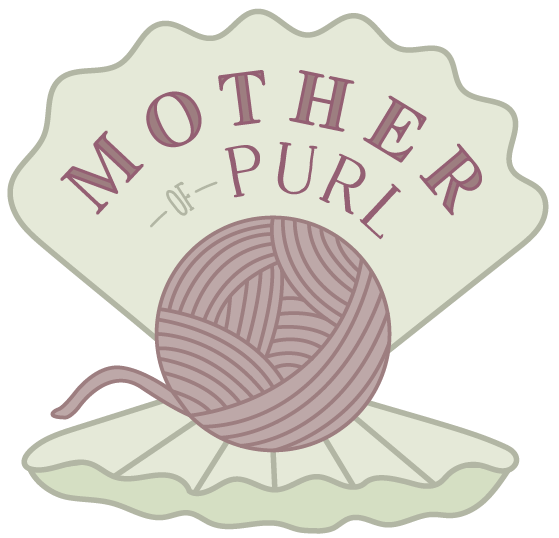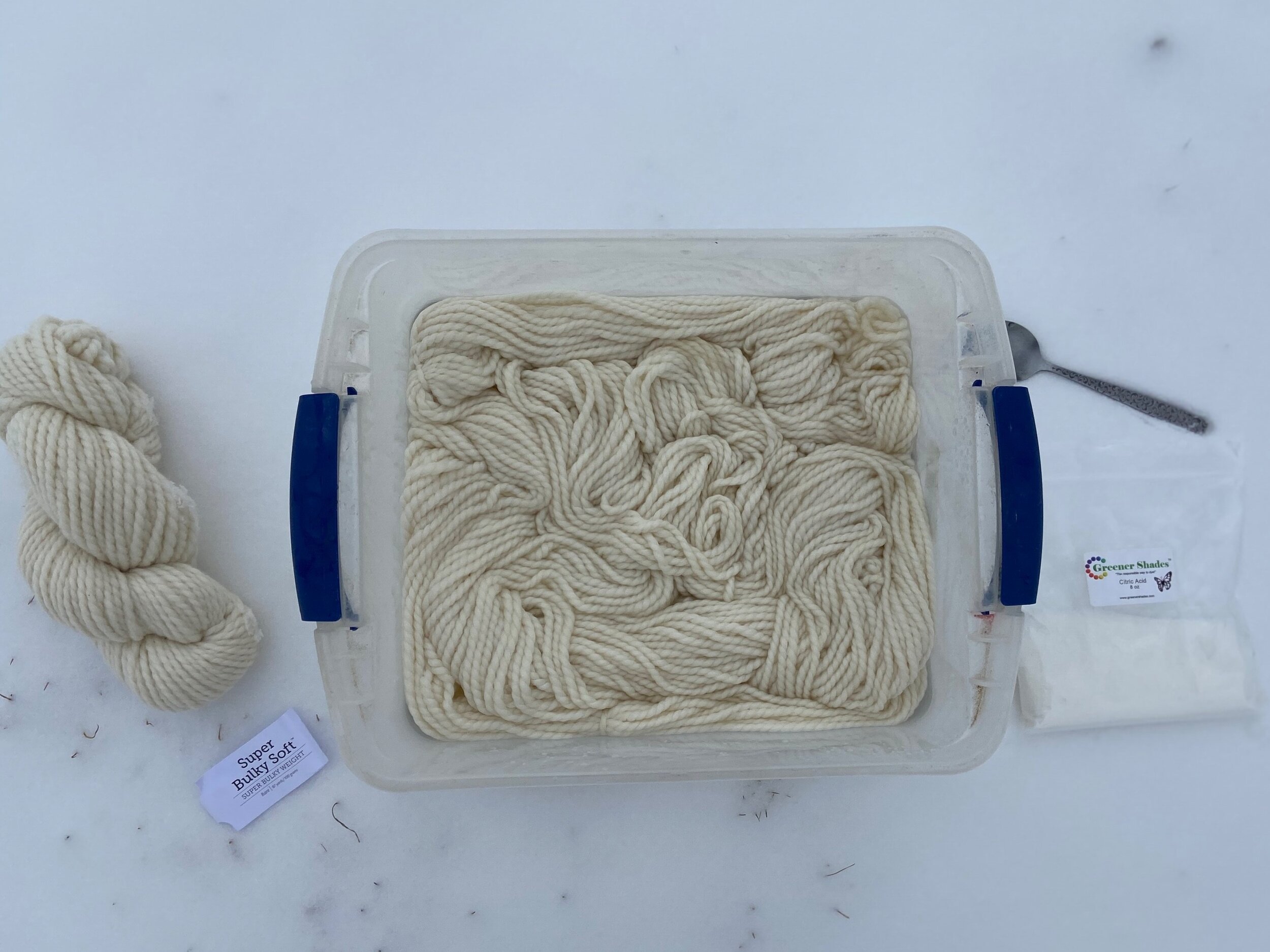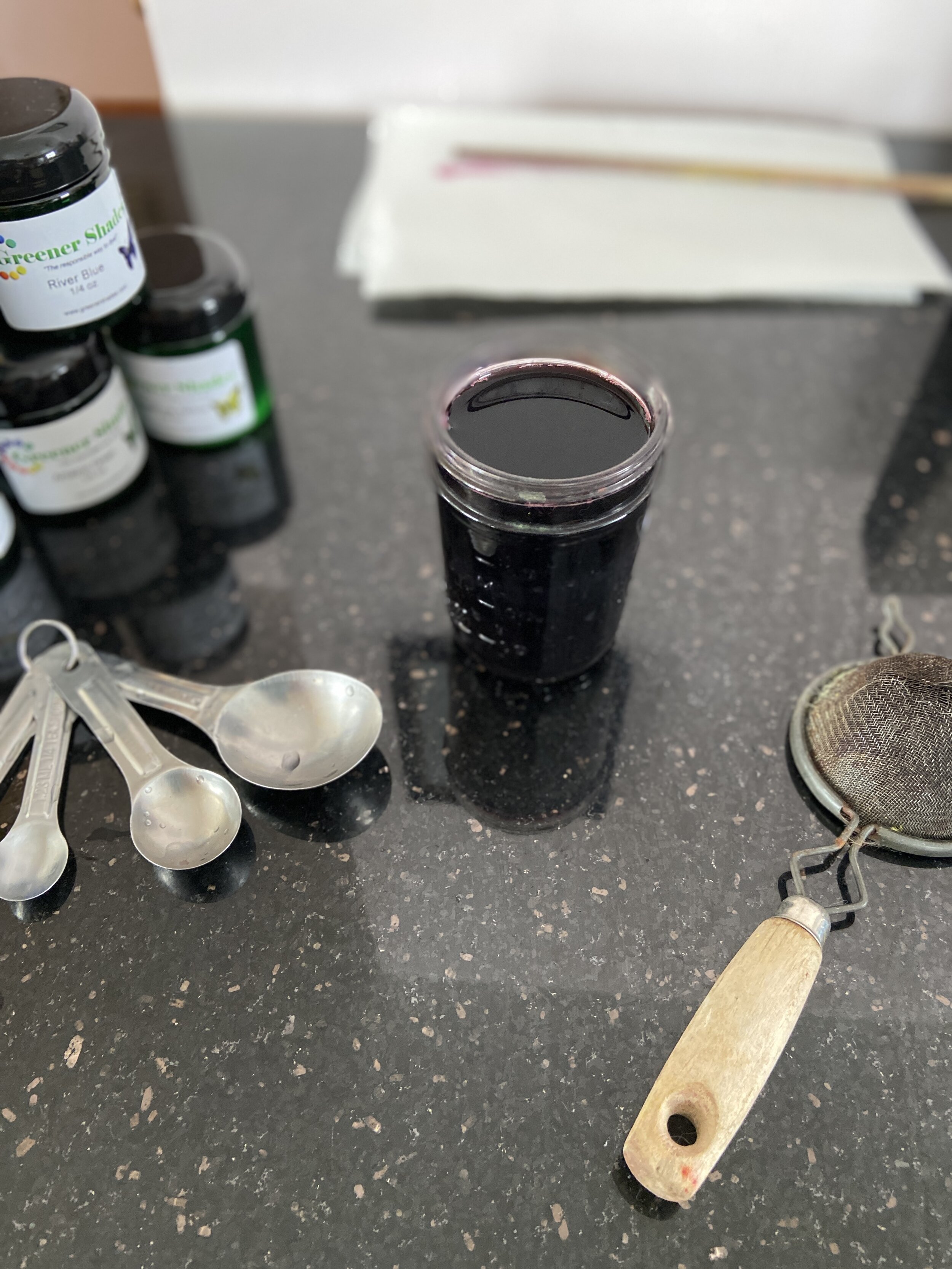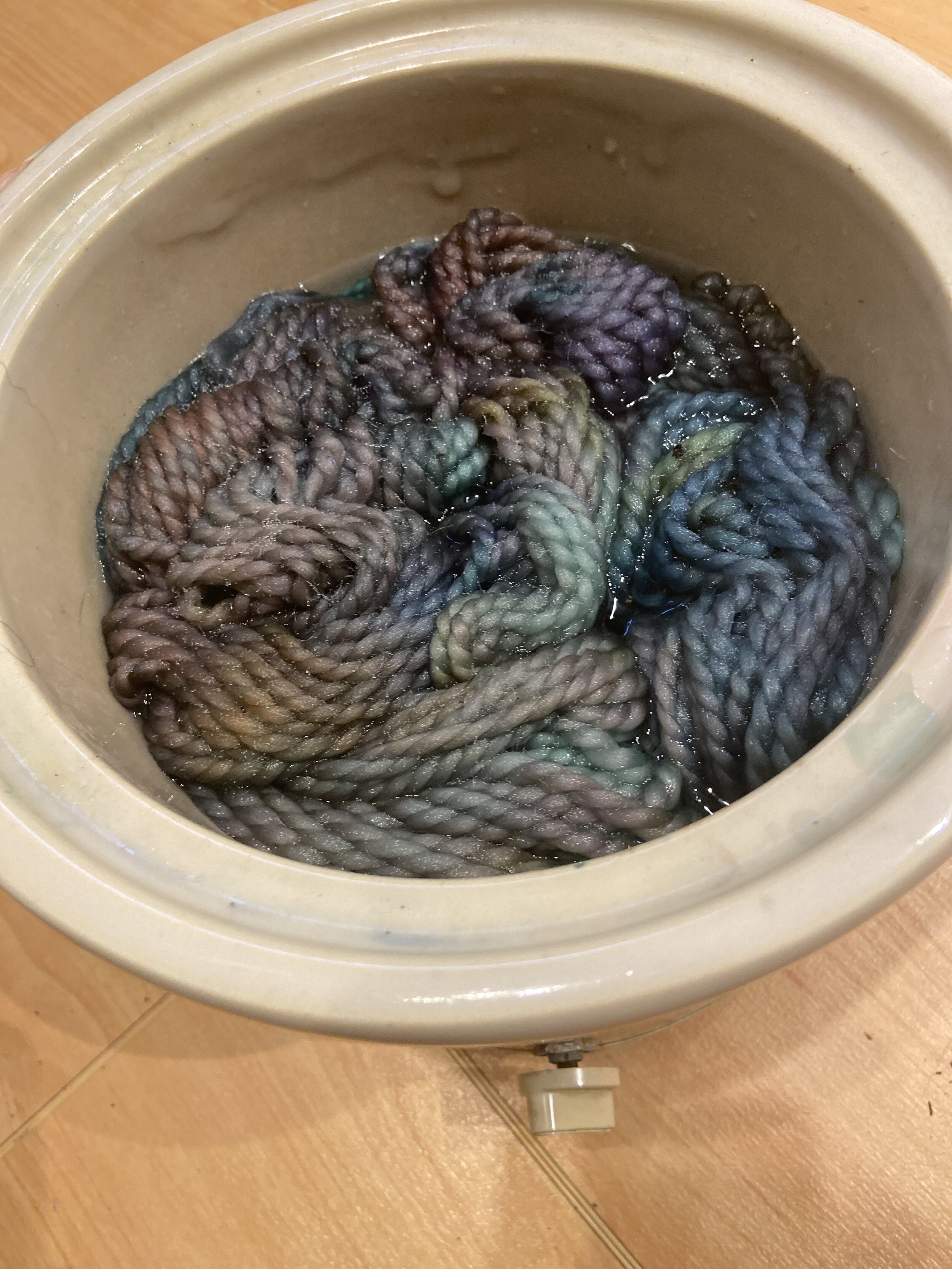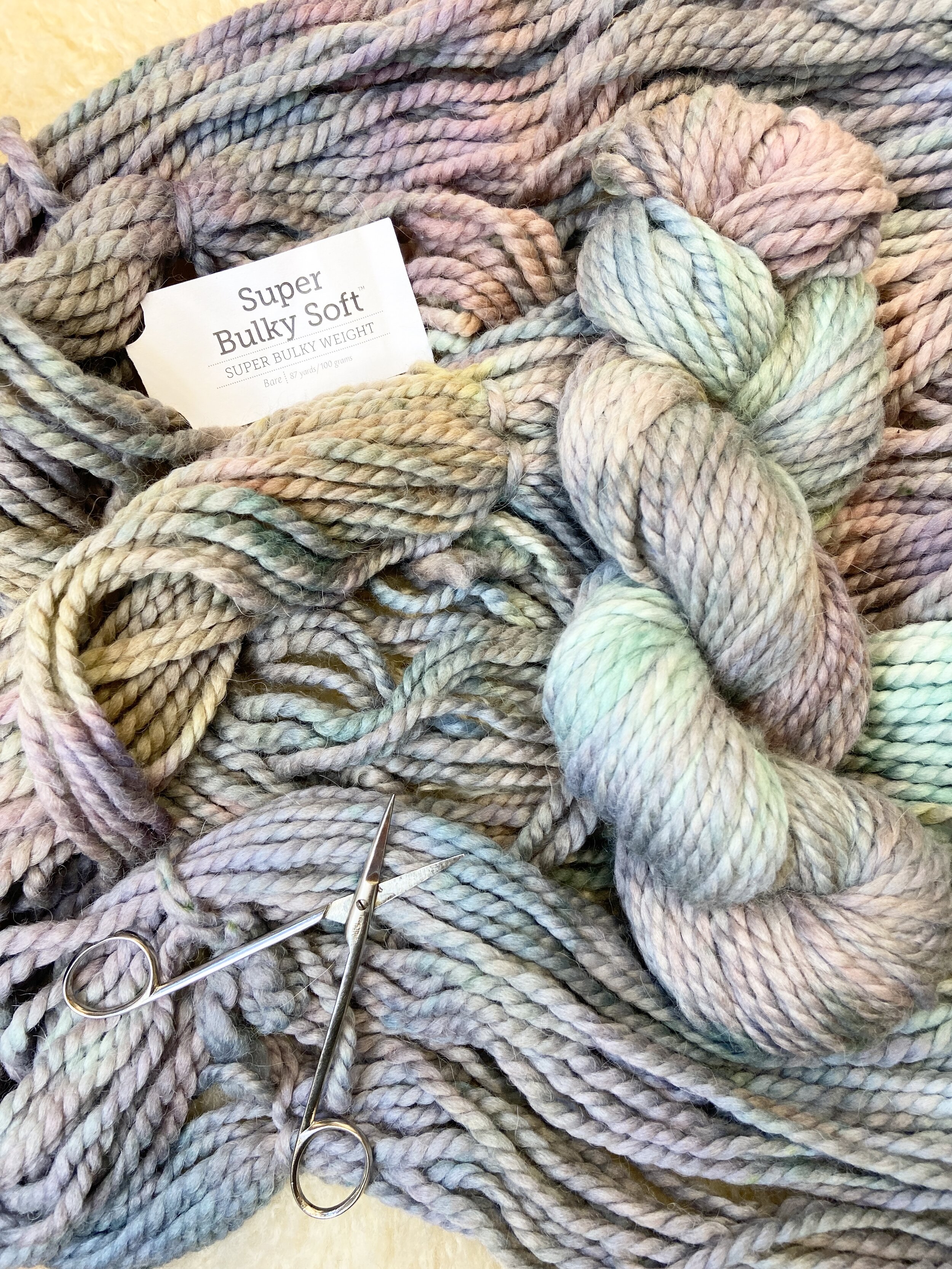How to dye Wool Yarn with Acid Dyes and Snow
Yarn Dyeing Tutorial
Hand Dyeing yarn with Snow & Ice
*Disclosure: I only recommend products I would use myself and all opinions expressed here are my own. This post contains affiliate links that at no additional cost to you, I may earn a small commission if you buy as a result of clicking this link. thank you.
It snowed again here in Wisconsin, and I wanted to get some practice with my snow dyeing.
A lot of folks asked for more information when I uploaded my snow dyeing video.
I’ll show you how I hand dyed this yarn.
Today I am using Super Bulky Soft 70% Superwash Wool 30% Superfine Alpaca Yarn from Knit Picks.
and Greener Shades Acid Dyes from Knit Picks
Wool is the perfect yarn for hand dyeing
Last time I dyed 100% Super wash wool twill from knit picks , and this is how it turned out.
What Can I use to Hand Dye Yarn?
For Acid Dyes to Work you need to use protein based fibers, that means, Wool, Alpaca, Silk, etc. Acrylic won’t work.
Dyeing wool with snow is somewhat of a surprise. I never really know what I’m going to get.
I applied the dye on top of the snow and as the snow melted, the dye entered into the yarn in the natural way the snow melted, and stuck where the citric acid was strongest. after mixing your colors and applying the dye there’s not too much you can do except watch as your bare yarn turns into beautiful hand dyed yarn.
First step: Add 2 Tablespoons of Citric acid to 1 gallon of water and soak your yarn for at least 2 hours.
I use Greener Shades Acid dye which is a Metal Free Acid Dye.
(Acid Dye means that they dye reacts to the acid as a mordant to fix the dye) in this case, citric acid.
Citric acid is used in a lot of food preparation, like cheesemaking and it’s also the sour stuff on the outside of sour patch kids.
it’s how dyeing yarn with kool-aid, or vinegar dyeing works too.
Safety first* Make sure you have proper PPE . Gloves and a Dust Mask for mixing your dye powders.
While the yarn is soaking you’re going to prepare your dye solutions.
I Prefer to pre-mix my dye solutions in water to get the colors that I want. you can also just sprinkle the dye powder on the snow later if you do not want to mix your own colors.
There are thousands of colors that can be made by mixing in different proportions the dye powder provided in this starter kit.
I create the colors by mixing my dye powder and water.
I really like these little squirt bottles that allow me to apply the dye onto the fiber with more control.
Keep in mind that when you pack the snow on top of the yarn, it will be adding ALOT more water, so, that will dilute your solution and you may get a color that is less intense than your mixture.
The starter kit comes with instructions for how much dye you need for the yarn amount that you’re dyeing and the amount of water you’re using.
Because we’re dyeing with snow today, it’s harder to measure how much water you will actually be using. I’m sure there’s a way, but I’m not a scientist. Plus, I enjoy living on the edge and being surprised by the color that I ultimately end up with on my hand- dyed yarn.
Remove your yarn from the citric acid bath, and place it in the container you usually dye your yarn in.
I use an old roasting pan, and it happens to have come with a grate that elevates my yarn out of the water as it melts.
pile snow on top of your yarn, and pack it down!
Add your dye now, like I said, I use my squirt bottles, but you can sprinkle dye powder if you like.
you can apply your dye in any way you want. if you want to leave white space, or saturate the whole thing.
Here I used a Mauve color, a teal, a true green, and an orange. Wait till you see how it came out!
Bring your yarn dyeing container to an area where the snow will melt.
I did pour off the liquid once, so the yarn was not sitting in the water.
I noticed that this time, maybe because this yarn is not super wash and my Previous yarn was, that the dye was not fully exhausted from the water.
the first time I did this dyeing method, the water was clear. but this time it was not. I reserved this liquid and used it to dye some wool locks.
How to Set your Yarn Dye
Because my dye was not exhausted, I placed the yarn, without squeezing any of the water out in my old yarn dyeing crockpot and heated the yarn for about 20 minutes.
after that, the dye was exhausted and I set my yarn out to dry.
I am so happy with the way the yarn turned out!
not at all what I was expecting, but it reminds me of amethysts and I couldn’t be happier!
Have you ever tried this yarn dyeing technique?
You can find everything you need to start experimenting with your own hand dyed yarn from Knit Picks!
